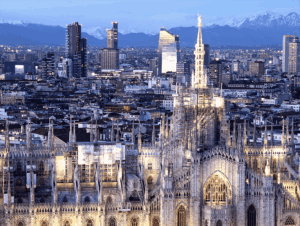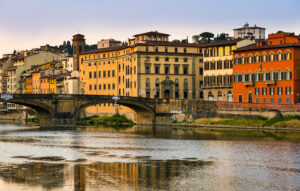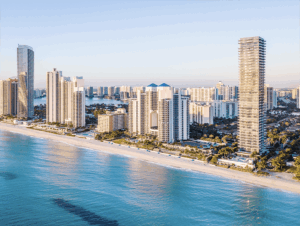Milan’s real estate market has delivered extraordinary returns over the past five decades, with property values in the city center increasing 35-fold since 1975—a performance that has outpaced traditional investment vehicles including gold, government bonds, and stock markets.
Columbus International knows exactly where to place your American dollars for maximum Milanese ROI. We don’t sell properties, we create generational wealth.
From Wall Street to Milan’s Fashion Quadrilateral in one strategic move.
Think you know luxury real estate? Think again. Milan is rewriting the rules.
Ready to unlock Milan’s golden vault?
According to a comprehensive study by Abitare.co presented at the recent Scenari Immobiliari conference, Milan’s residential properties have proven to be one of Italy’s most lucrative long-term investments. The data reveals that while government bonds yielded 29 times their original value and stocks climbed nearly 34 times, Milan’s central district properties commanded the highest returns at 35 times their 1975 prices.
The Gold Standard Falls Short
Perhaps most striking is the comparison with gold, long considered the ultimate store of value. Measured in dollars, gold appreciated 21 times over the same period—significantly trailing Milan’s residential market. However, the analysis acknowledges important caveats: properties purchased 50 years ago would now require substantial renovation, whereas gold remains unchanged over time.
When the Boom Began
The meteoric rise in Milan’s property values occurred primarily before 1992, when the market experienced its first major correction coinciding with Italy’s political upheaval during the “Clean Hands” (Mani Pulite) investigations. From 2000 to present, central Milan values have “only” doubled, posting a 105% gain that still outperformed office spaces (+77.2%) and retail properties (+58.4%).
Today’s Hottest Neighborhoods
The report identifies several districts experiencing remarkable appreciation:
Recent Standouts (2024 performance):
- Savona/Tortona: +11.2%
- Via Solari: +11%
- Malaga (Barona district): +10.6%
- Viale Gorizia: +10%
Five-Year Champions:
- Viale Gorizia leads with +46.7%
- Via Feltre: +42.3%
- Viale Jenner: +42%
Decade-Long Winners:
- Viale Stelvio: +70.1%
- Viale Jenner: +69.2%
- Corso Vercelli: +68.3%
What Buyers Really Want
The study reveals fascinating insights into buyer preferences for new construction properties. An overwhelming 95% of prospective buyers demand parking spaces—a costly but typically achievable feature in new developments. Video intercoms are equally popular (95%), followed by abundant natural light (93%), terraces (90%), and home automation systems (85%).
Interestingly, only 57% desire concierge services, despite the upscale terminology potentially justifying higher maintenance fees. Shared spaces rank lowest in buyer priorities, with communal laundries attracting merely 5-15% interest. As one prominent Milan developer wryly observed, “Those who want communal laundries usually plan to wash their pets’ clothing there.”
Current Market Dynamics
2024 Average Sale Prices:
- Central zones: €10,450 per square meter
- Semi-central areas: €6,000 per square meter
- Peripheral districts: €3,750 per square meter
2025 Projections:
- Central zones: €11,200 per square meter
- Semi-central areas: €6,450 per square meter
- Peripheral districts: €3,950 per square meter
Rental Markets: Current annual rates range from €425 per square meter in central locations to €145 in peripheral areas, with modest increases expected in 2025.
Milan’s Magnetic Appeal
The report highlights Milan’s exceptional attractiveness compared to national averages across multiple dimensions:
- Demographics: 70% vs. 45% national average
- Employment opportunities: 90% vs. 45%
- Education: 99% vs. 10%
- Mobility: 70% vs. 26%
- Culture: 68% vs. 35%
However, Milan scores poorly on green spaces (5% vs. 10% national average) and social cohesion (33% vs. 66% national average)—perhaps explaining residents’ limited interest in shared community spaces.
Looking Forward
Despite concerns about housing affordability, Milan’s population is projected to grow by 86,000 to 200,000 residents by 2039, suggesting continued demand pressure. The suburban market shows greater transaction volume growth than the city center, though this represents market maturation rather than urban flight.
For investors and residents alike, Milan’s housing market represents a compelling case study in urban real estate appreciation, driven by the city’s evolution into a global financial and cultural hub. While past performance doesn’t guarantee future results, Milan’s fundamentals suggest continued strength in one of Europe’s most dynamic property markets.



